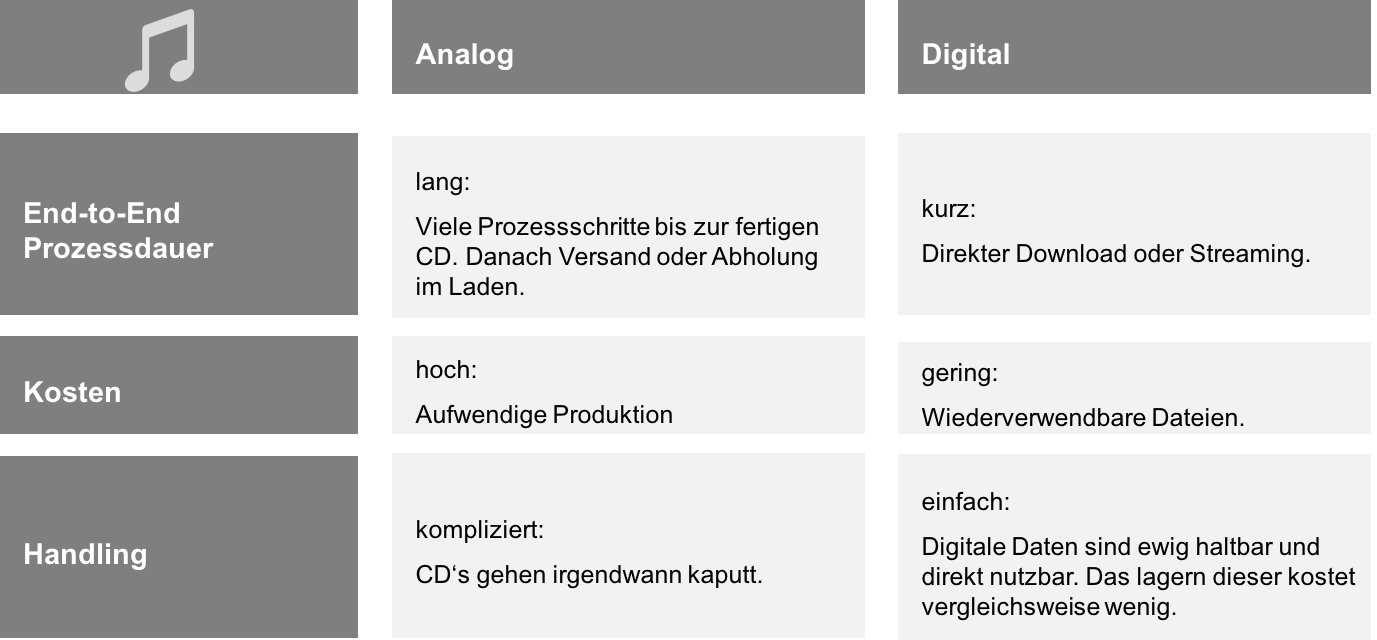“In order to survive and assert itself against competitors, every company must become a digital company. Technology is the determining differentiating factor today – in retail, in the financial sector, in manufacturing, in public administration and even in the pharmaceutical industry. Every company must go digital. This is the only way to get better and more innovative. However, innovation means more than just investing in new technologies. ” so Salesforce in a news article . Digital companies seem to be “dangerous” to traditional companies and are radically changing customer behavior. But what is such a digital company and how can this be determined? For example, is a company with its own app already a digital company?
Would you like a copy?
The magazine T3N Back in 2015, thought about whether the ideas of digital companies could also be applied to the hairdresser next door or the bakery around the corner. We are certainly not yet noticing any noticeable effects. What we do notice, however, are requests for changes in traditional companies. A change in work, business models, leadership and structure is apparently imminent or has already begun. But how does the change to a digital company succeed? There are other approaches in one Article on digital change .
Goal, digital strategy & business model
Petry (2016) has already established that, like all other change projects in companies, digital transformation also needs a strategy. He uses the words: Digital strategy, digital vision and digital goals. He may be right, because without a direction and a co-ordinated approach, changes in companies are often difficult. In the following figure, he has divided digital strategies into different categories. So he basically differentiates between 2 types of digital companies: Digitization around customer needs better to satisfy and Digitization around the organization to improve. According to Petry (2016), a completely new business model is necessary if both are to be sought. If digitization is only superficial, such as the introduction of a wiki that nobody uses properly, then according to Petry no digitization takes place, but business as usual. Read more in mine Digital strategy article .

Organization and control in the digital age
To implement such a strategy, Petry (2016) recommends the “structure follows strategy” approach. This means that due to the digitization measures, changes in the structure must also follow. So the question of digital roles and structures in companies arises. But how do these differ fundamentally from other models such as Scrum or frameworks such as Holacracy? Petry gives some examples of this.
Digital committees
The task of such committees is to make decisions and initiate topics. Such a committee has a specific topic, such as the digital car, and pushes it forward together and decides on how to proceed with this topic.
- Steering Committee (Volvo)
- Innovation Committee (Thomas Cook)
- Digital Advisory Board (General Electric)
Digital reels
The aim of the digital roles is to drive topics forward. In contrast to the committee, they usually do not make decisions, but are drivers for the topic. Certainly this differs from company to company and I am only giving 2 small examples here, but the idea behind the roles should be clear.
- Chief digital Officer (Starbucks)
- Digital Champion (Nestle)
Digital units
Digital units are commissioned with the implementation of digital projects. This also includes the Digital factories or the digital labs which I explained in another article. More and more units of this kind have emerged recently and seem to be the most popular approach in Germany.
- Digital Unit (EON)
- Center of digital Expertise (Telekom)
- Start Ups (Axel Springer)
Digital projects & DIGITAL COMMUNITiES
A small version of these digital units are digital projects, which in my opinion are not that different from normal projects. You are just pursuing a digital topic. The digital communities are used for networking, generating ideas and “introducing” them to the organization.
Summary: digital companies
In summary, it can be seen that companies are changing digitally or are in the process of doing so. The first structural approaches were explained in this article. There are certainly numerous other examples, but I think that would go beyond the scope of this article. In any case, there is an initial orientation as to how this change takes place structurally in companies. But one thing is clear: Without a little digitization, it no longer works. Therefore I would like to conclude with a comparison of steaming and CD’s, which shows the advantages of analogue music compared to digital music. What do you think? Which approach do you think is more successful in the modern world?




